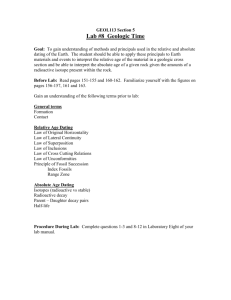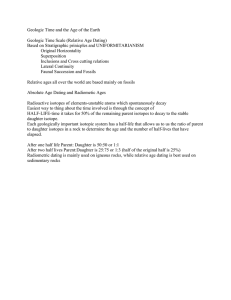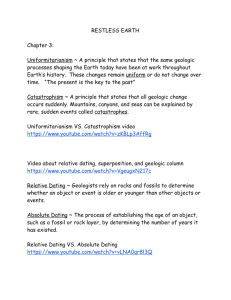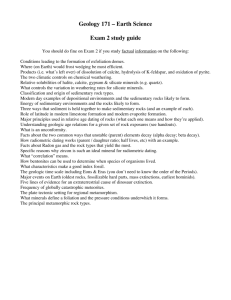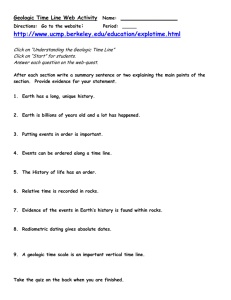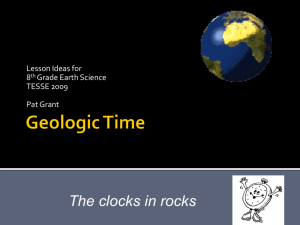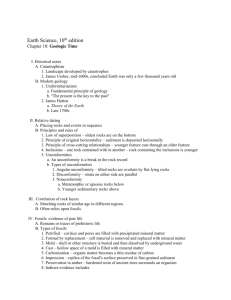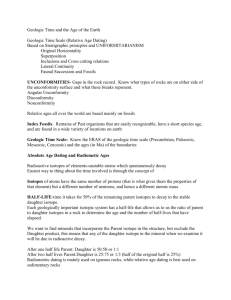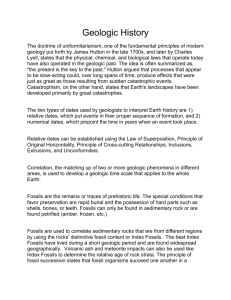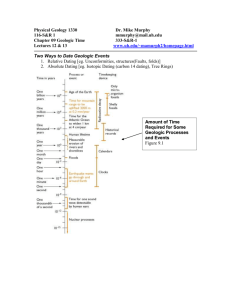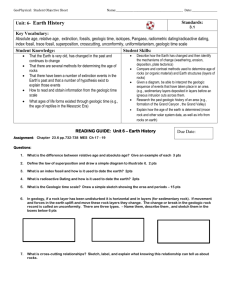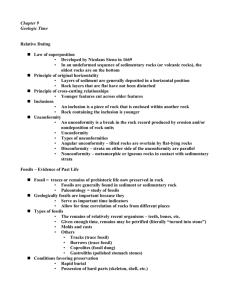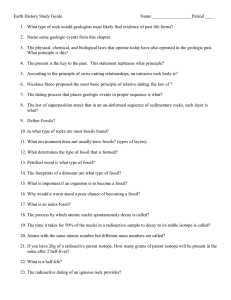Geologic time (Chap. 2)
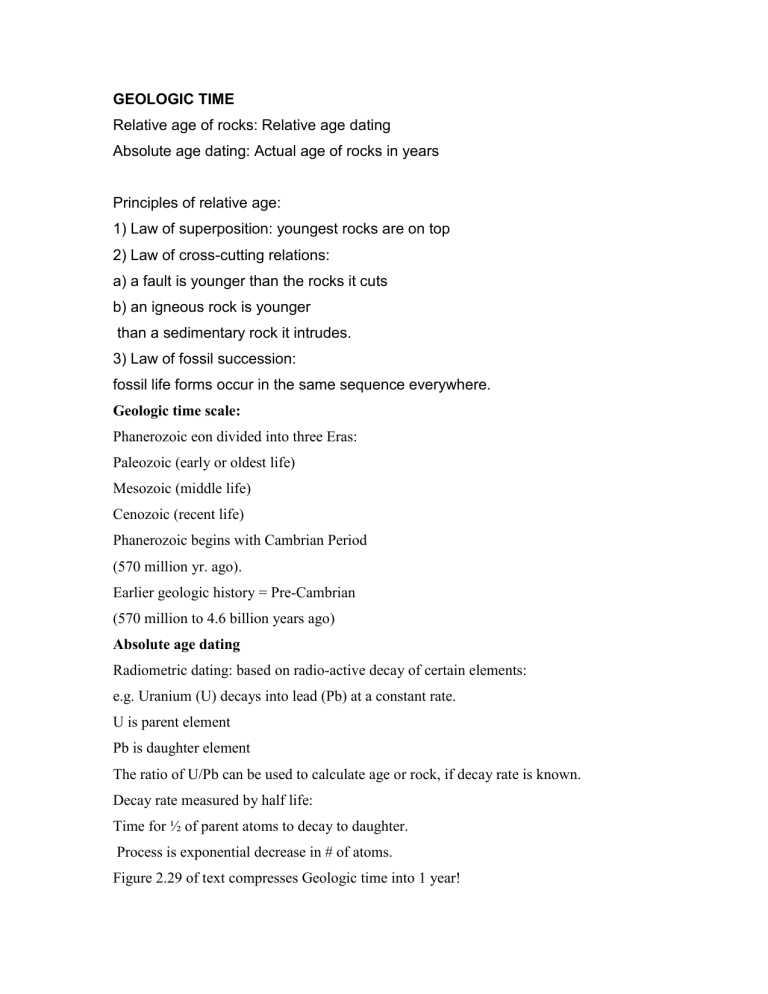
GEOLOGIC TIME
Relative age of rocks: Relative age dating
Absolute age dating: Actual age of rocks in years
Principles of relative age:
1) Law of superposition: youngest rocks are on top
2) Law of cross-cutting relations: a) a fault is younger than the rocks it cuts b) an igneous rock is younger
than a sedimentary rock it intrudes.
3) Law of fossil succession: fossil life forms occur in the same sequence everywhere.
Geologic time scale:
Phanerozoic eon divided into three Eras:
Paleozoic (early or oldest life)
Mesozoic (middle life)
Cenozoic (recent life)
Phanerozoic begins with Cambrian Period
(570 million yr. ago).
Earlier geologic history = Pre-Cambrian
(570 million to 4.6 billion years ago)
Absolute age dating
Radiometric dating: based on radio-active decay of certain elements: e.g. Uranium (U) decays into lead (Pb) at a constant rate.
U is parent element
Pb is daughter element
The ratio of U/Pb can be used to calculate age or rock, if decay rate is known.
Decay rate measured by half life:
Time for ½ of parent atoms to decay to daughter.
Process is exponential decrease in # of atoms.
Figure 2.29 of text compresses Geologic time into 1 year!
